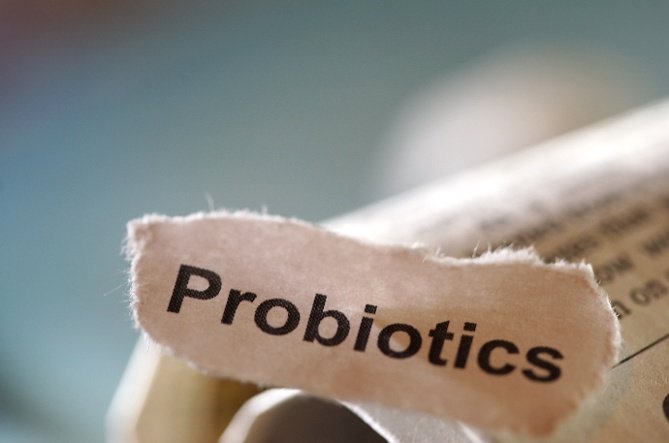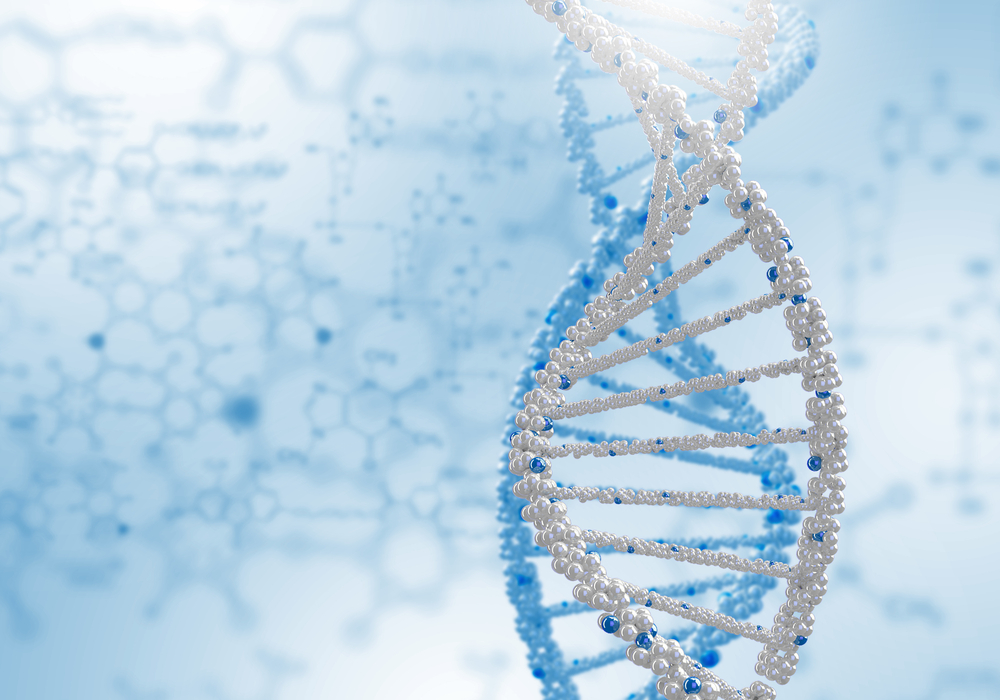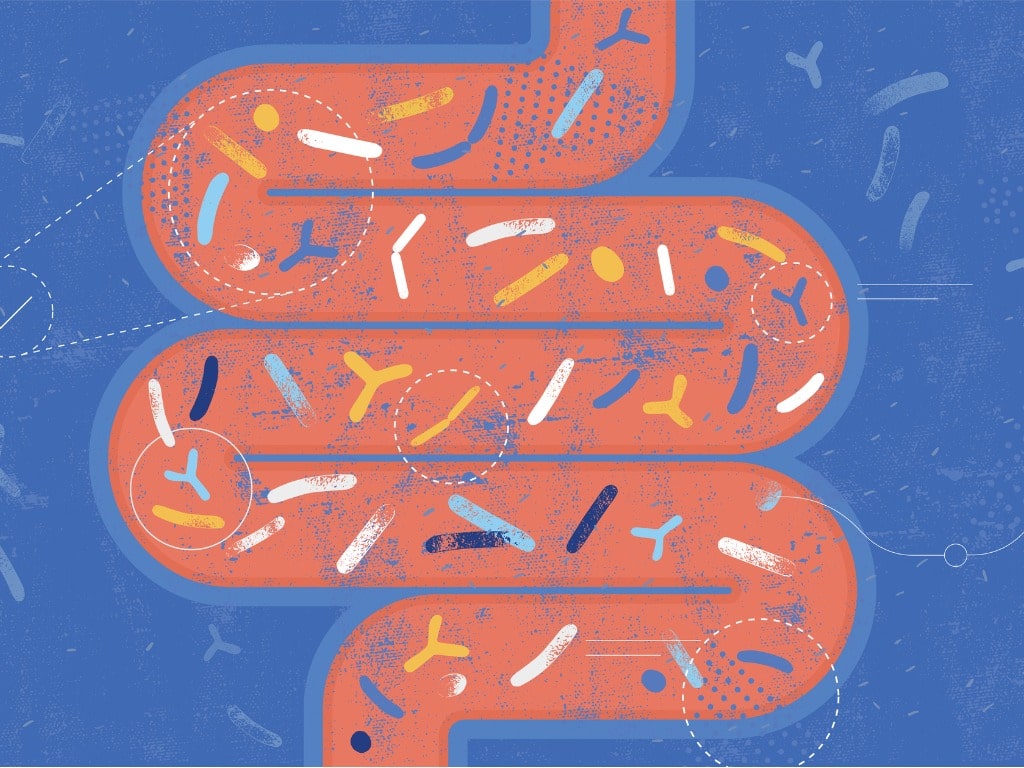Learn what a Bifidobacteria can do for a healthy gut and immune system (with a focus on Bifidobacterium lactis)
Our understanding of probiotic benefits has evolved to focus more on higher-level groupings of probiotics, instead of focusing on the benefits of specific strains.
When you compare healthy guts to unhealthy ones, we’ve learned some general rules of thumb.
1.) Different types of bacteria predominate in different regions of the gut. Bifidobacteria are highly prevalent in the colon – where the vast majority of fermentation takes place. In contract, Lactobacilli species tend to predominate in the small intestine.
2.)Healthy guts contain high levels of keystone bacteria, and these keystone bacteria are necessary to support the diversity of other strains. Bifidobacteria is one of the keystone strains of the gut.
3.)When larger groupings of diversity are lost, individual species that otherwise would be helpful or harmless – can become opportunistic like weeds in a garden. When “weeds” grow in the gut, we call it dysbiosis, overgrowth, or infection.
4.) When you analyze the guts of individuals across the world, the composition of bacteria strains will differ widely by geographic region and strains also differ between individuals within a region. There are not clear correlations with specific strains and corresponding illnesses. The chase for a “strain for every pain” – has largely been proven a fool’s errand.
While specific strains may have unique properties, it can be like finding a needle in the haystack as to what’s right for you. Unhealthy guts do not lack specific strains, they lack overall diversity of gut flora. Healthy guts are associated with high diversity; unhealthy guts are associated with less diversity.
5.) Establish diversity first by replenishing keystone groups like Bifidobacteria. You then maintain gut microbiota with prebiotics, diet & smart lifestyle choices, and if you choose, continued probiotic supplementation.
Loss of Immune Balance and “Tutoring”
When gut microbiota help break down food in the colon – byproducts are released that offer health benefits to the body. A dysbiosis (imbalance of bacteria) not only leads to physical discomfort and a disruption of daily activities, it also reduces fuel for immune cells, cells lining the gut, and the availability of nutrients the body uses.
Direct and indirect communication from gut flora modulates virtually everything in the body.
Gut bacteria not only provide fuel for immune activity, they also actively “tutor” immune cells like macrophages and dendritic cells and make sure they react appropriately against pathogens as well as our own proteins and tissues.
Autoimmune disease cannot be triggered without the presence of intestinal hyper-permeability or “leaky gut”. Leaky gut is triggered by physical irritants, inflammatory food, pathogenic microbes, and generally anything that disrupts mucosal health.
The gut microbiota work with the mucosa with dual benefits to one another. Bacteria levels will promote a healthy mucosa – in return a healthy mucosa feed, protects, and maintains healthy bacteria.
Bifidobacteria are important players in this relationship.
Because Bifidobacteria strains are some of the most prevalent bacteria in the intestines – a drop in levels will significantly throw off the relative proportions of other microbes.
Other microbes may now grow unchallenged like weeds in a garden. These microbes might be more immune-stimulating – or produce excess byproducts and waste that gunk up our metabolism.
Immune cells, once carefully tutored by healthy flora, may now start acting like kids who are without chaperones for the first time.
They might start making mistakes like attacking thyroid tissue, the joints, or the gut lining itself. They might stop scavenging for viruses and other cells that actively try to trick the body.
Bifidobacteria are more immune-modulating and balancing when compared to other groups of probiotics.
You do not find issues of overstimulation of immune activity like you might with Lactobacilli-focused formulas. Lactobacilli are still important long-term – yet not always preferred as a first option – and are more likely to be problematic when overgrown.
For this reason, Bifidobacteria are among the first probiotics I introduce in a gut restoration protocol.
Of the Bifidobacteria, Bifidobacterium lactis is one of the most commonly used supplemental probiotic organisms. It is a subspecies of Bifidobacteria animalis, but you’ll find B. lactis on most labels. In research you’ll see B. animalis mentioned. It is included in my preferred Bifido supplement, BifidoSpectrum Probiotic by Doctor Alex Supplements.
Benefits of B. lactis in Infancy
During infancy, the colonization of keystone probiotics is established through birth, breastfeeding, and introduction to the local food and environment.
Bifidobacteria dominate the composition of colonic flora in infants – comprising 80% of the present bacteria.
Later in development, the flora and immune system mature to protect the individual from outside pathogens, and also to adapt to a person’s unique diet and environment (protect from local pollen, mold, bacteria, parasites, etc).
Bifidobacteria ultimately make up to as much as 25% of the colonic flora composition in adults (1).
Because Bifidobacteria are so prevalent, a reduction of Bifidobacteria levels sets the stage for immune imbalance, poor metabolism, nutrient loss, and opportunistic growth of other microbes.
If levels of keystone bacteria fall, other microbiota and their byproducts are no longer offset & can now become a source of immune imbalance, hypersensitivity, or physical bloating, mental fog, or more. The result may be dysbiosis, & susceptibility to future infection (2), & hypersensitivity to food & the environment.
The re-establishment of cornerstone probiotics like Bifidobacteria may help bring balance back to the immune and intestinal environment (3), keeping the “see-saw” from tipping too far one way or the other.
- Allergic infants have been found to have lower levels of Bifidobacteria and higher levels of Clostridia (4). B. lactis supplementation not only improves Bifidobacteria counts but also has the potential to reduce the growth of Clostridia and Enterobacteriaceae bacteria in the gut (5)
- A 2019 review published in The Journal of Pediatric Pharmacology and Therapeutics demonstrated that Bifidobacterium lactis supplementation in formula or mother’s milk in the range of 1.6-2.5 billion CFU significantly reduced the incidence of necrotizing enterocolitis (NE) in pre-term infants (p<.001) (6). NE can occur in full-term infants as well.
- When Bifidobacterium lactis is added to infant formula, it significantly reduces the incidence of gastrointestinal infections & did not raise safety concerns or adversely affect infant growth. When combined with another probiotic, it also reduced the frequency of colic and irritability (7).
- Probiotic studies that include B. lactis are recognized to help modulate mucosal immunity & blood levels of key immune cells in infancy (8)
Benefits of Bifidobacterium lactis Probiotics:
 Constipation, diarrhea, bloating and distention are some of the most common symptoms of gastrointestinal dysfunction. B. lactis probiotics may support improvements in all.
Constipation, diarrhea, bloating and distention are some of the most common symptoms of gastrointestinal dysfunction. B. lactis probiotics may support improvements in all.
- A probiotic review & meta-analysis published in the American Journal of Clinical Nutrition reported an improvement in stool consistency, transit time, & frequency of bowel movements with B. lactis supplementation. The findings were more pronounced for B. lactis than for other probiotics considered in the analysis (9).
- An earlier meta-analysis published in the World Journal of Gastroenterology reported similar findings. B. lactis supplementation was associated with greater improvements in motility than other probiotics (10).
- Symptom scores of bloating and distention showed marked improvement with B. animalis supplementation (B. lactis is a subspecies) (11).
- Diarrhea is a symptom of many gastrointestinal problems, with infection being an important subset of the cause.While infection may need to be managed medically, B. lactis supplementation by itself or in combination with other probiotics may help reduce the duration of diarrhea in a dose-dependent manner (the higher the dose, the greater degree of improvement).It is worth mentioning that S. boulardii (Found in RestorFlora, and also available by Klaire labs) and Lactobacillus rhamnosus (found in Theralac, Granular Theralac, Ther-biotic Factor 1, and Ther-biotic Complete) have a stronger track record for reducing incidence and duration of acute, watery diarrhea (12; 13).
- Some individuals are sensitive to high-oxalate foods. Bifidobacterium lactis produces an enzyme that helps breakdown oxalates (14) and may help reduce oxalates in sensitive individuals.
- Probiotics including Bifidobacteria support healthy metabolism & weight, in part, by increasing levels of short-chain fatty acids (SCFAs). SCFAs support the body’s energy metabolism. They serve as fuel for immune cells and specialized cells that line the intestines. (15; 16). Butyricocci bacteria are a group of probiotics that live in the gut that promote the production of butyrate, a primary SCFA used by the body. You can also supplement with SCFA’s using a product like Sunbutyrate Liquid by Pure Encapsulations or SCFA capsules.Normally, butyrate-producing Butyricocci are not stable enough for oral intake as they live in anaerobic regions of the gut (no oxygen) & killed in the presence of oxygen.Microbiome Labs has developed an anaerobic probiotic that uses a special lab environment during production and is encased in a special capsule to safely deliver Butyricocci to the intestines. It is called Butyrate Ultra and is intended to be taken alongside spore probiotics and other probiotics such as Bifidobacteria spp.
- Prebiotic supplementation will also support levels of Bifidobacteria in the body. Targeted, “precision” prebiotic blends now exist that favor the growth of keystone bacteria strains (see FloraStart Prebiotic Fiber and MegaPrebiotic). Other prebiotics such as FloraSpectrum Prebiotic Fiber will be helpful, but may support broader probiotic strains that may not be ideal early on in a treatment protocol.Prebiotic fibers are important for sustaining colonization of diverse groups of bacteria. When prebiotics and probiotics are taken together – it is called a “synbiotic” strategy – named for the synergistic benefit of taking both. Together prebiotics, probiotics, and mucosal support work in dual-directions – supporting the health of one supports the health of the other.
Bifidobacterium lactis Supplementation – Benefits for Older Adults
The youngest and oldest are at most risk of immune imbalances and infection.
Digestive capacity decreases with age and humans become increasingly dependent on learned immunity – with gut flora acting as “tutors” to the learning!
When you lose flora, you lose the tutoring – and the body starts to “forget” how the immune system should respond to normal exposures. Immune balance and tutoring is incredibly important as your body needs to walk the fine line of delivering a strong immune response without inflicting collateral damage to its own tissues.
Older adults are much more likely to have taken multiple rounds of antibiotics over the course of their lifespan – and may have experienced a loss of flora diversity (and an increase in associated risks) as a result.
Probiotic strategies can be a pro-active way to support age-related changes in immune and digestive function.
- A review published in a 2017 issue of Nutrients supported the ability of B. lactis (HN019) supplementation to support normal levels of white blood cell and natural killer cell levels in elderly participants (17).
- Studies support improvements in motility for individuals taking B. lactis-probiotics – and the findings are more pronounced for older individuals (18)
The FUT2 Gene is Strongly Correlated with Bifidobacteria Levels in the Gut
 The new age of highly personalized functional medicine now incorporates insights from nutrigenetics. Those with 23andMe.com data can run their panel through 3rd party resources like Livewello.com or Promethease.com and figure out what versions of genes they carry.
The new age of highly personalized functional medicine now incorporates insights from nutrigenetics. Those with 23andMe.com data can run their panel through 3rd party resources like Livewello.com or Promethease.com and figure out what versions of genes they carry.
Carrying a “Snp” (single nucleotide polymorphism) is not inherently bad, nor does it make it a “dirty gene”. Snps affect how a gene functions. They can be protective too.
If a gene is a little slower at doing its job, the body is often able to compensate with other systems. If your body has trouble making a certain component, it can be helpful to know that it can be helpful to supplement with that component, or to eat more foods that contain it.
The FUT2 gene determines if you secrete your blood type on certain cells in the body. If you carry snps in this gene, you can be a “non-secretor” genotype – which means that your body does not express its blood type on as many cells in the body – and that can make you a little more susceptible to allergies and sensitivities because you lack some of the protective qualities of that expression.
If you ever heard of the blood-type diet, it is based in part on some of these principles.
Proteins expressed by the FUT2 gene serve as flags for “Attach here!” in the gut mucosa.
The proteins are also used as microbial fuel. If good bacteria like Bifidobacteria do not see the flags, they attach less to the mucosa, and there’s less fuel source to promote their growth (19).
As the bacteria and mucosa work together to tutor the immune system and breakdown food – FUT2 “non-secretors” may be more sensitive to food allergies and sensitivities & leaky gut as a general rule of thumb than compared to “secretors” of FUT2.
I am homozygous with snps in the FUT2 gene and so much of my knowledge about Bifidobacteria has come from my higher personal need for them!
Those carrying snps in the FUT2 gene need to be more mindful of the health of their Bifidobacterium strains, and also their B12 levels.
FUT2 and vitamin B12 Levels
Healthy bacteria in the gut will produce B12 that our body uses. If you lack this internal source of B12 supply – you are prone to B12 deficiency.
So those with the FUT2 gene should strongly consider Bifidobacteria support via supplementation or prebiotic supplementation – and monitor their B12 levels.
B12 levels are affected by their own sets of genes and you can get highly personalized with your plan when you have your genetic information available.
We use B12 Lozenges or B12 Liquid when supplementing with vitamin B12.
Genes are like a loaded gun, they still need to be triggered by lifestyle or the environment before they become a problem. Use genetic information mindfully.
Just because you carry a version of a gene does not mean that you need lifelong support – gene information is still is most useful in the context of regular testing and a good case history with a functional practitioner.
FUT2 and its association with low Bifidobacteria is one snapshot of that discussion.
Choosing a High-Quality Bifidobacteria Supplement
My favorite Bifido-focused probiotics includes BifidoSpectrum Probiotic by Doctor Alex Supplements or Trubifido by Master Supplements. Both brands have a special capsule formulation that protects the organisms from the acidic environment of stomach acid and bile acid early on in the digestive tract, so they survive in the later small intestine and large intestine where Bifidobacteria thrive.
If companies do not use a special capsule or capsular ingredient – 90% of Bifidobacterium strains will otherwise be killed in the stomach before making it to the areas they colonize!
Spore probiotics and Saccharomyces boulardii are naturally resistant to stomach acid and do not need such protections.
For prebiotic support of Bifidobacteria strains, I preferentially use FloraStart Fiber or Megaprebiotic before using an in-between probiotic like TruFiber (Master Supplements) or a broad prebiotic like FloraSpectrum Prebiotic Fiber. I also actively include a variety of vegetables and starches in my diet and try and rotate in new ones when given the chance.
Spore probiotics are highly popular and have now been clinically shown to help increase the diversity of keystone bacteria like Bifidobacteria.
Taking spore probiotics alongside “conventional” probiotics like Bifidobacteria can be an excellent one-two punch. The most popular is Megaspore, it is by far the favorite supplement taken by my clients. I also use SporeBoost IG to introduce a different set of spore probiotic strains. I take it on its own or in addition to Megasporebiotic.
Remember, the overall goal is total GI diversity of microbes. The benefits of spore probiotics are too many to list, yet have clinical trials supporting use with leaky gut, metabolic parameters, and support of probiotic diversity in the gut.
Spore probiotics work in conjunction with Bifidobacteria and have been clinically studied to boost bifidobacteria, especially when combined with prebiotics.
My maintenance protocol involves a spore probiotic, a conventional bifidobacterium or lactobacilli-containing supplement, and a prebiotic. I will rotate blends to keep my immune system guessing and to promote diversity. I’ve discussed this strategy in detail in Dr. Rinehart’s Probiotic Blueprint.
**Always start low and work your way up when taking probiotics.
Abrupt changes to the flora can make even healthy guts a little uncomfortable in the short-term as the changes take place and “die-off” of bad guys occurs and new immune communications are being delivered.
Ideally, take probiotics following a meal for best utilization and colonization deep in the intestinal tract.
If having trouble integrating probiotics due to more pronounced leaky gut and “die-off” symptoms, consider adding IgG-Boost 2500 Immunoglobulin Powder or MegaMucosa, or use other binders like activated charcoal or proteolytic enzymes in the short-term to help mop up wastes, toxins, and debris.
Once I’ve established Bifidobacteria support for one to two months, I’ll slowly integrate broader probiotics that include Lactobacilli and other more “stimulating” strains. I’ve detailed this strategy in my Probiotic Blueprint.
Gut flora can respond and recolonize in as little as three weeks, but a protocol can take three to nine months and longer if long-standing immune issues have developed.
Ultimately, the goal is to support the diversity of microbes in the gut by eating diverse sources, colors, and varieties of vegetables and starches & not supplementation. Supplementation is a tool to get you to that point.
The diverse food components supply unique polyphenols, metabolites, fibers, & fuels that support overall gut flora and mucosal health. As exciting as supplementation can be, don’t forget about whole food strategies! I include these supplementally with PhytoFlora Microbiome Support – it contains two highly researched polyphenol extracts that support good bacteria growth, short-chain fatty acid production, anti-inflammatory benefits, antioxidant benefits, and more.
Diets that are narrow in the types of foods consumed – promote a narrow swath of beneficial bacteria in the gut – and an increased vulnerability to imbalances.
A diverse diet will promote and maintain diverse flora strains in the gut. Of course, supplementation is available to support needs above and beyond what your diet may offer.
Other Resources:
- For broader protocol ideas that may need to take place before or alongside probiotics, check out: The 7 Core Strategies to Heal Leaky Gut and Manage Leaky Gut Naturally
- C. diff is a concern for many who have lost flora diversity. I’ve looked at what probiotics to take during and after antibiotics: Probiotics and C Diff: What Probiotics Should be Taken With or After Treatment with Antibiotics?
- When imbalances are severe – consider starting with an Elemental Diet Reset: Elemental Diet – What is it? How does it work? When is it used? What to Expect During and Afterwards
- Bifidobacteria avoid many issues of probiotics in the context of SIBO and/or histamine intolerance
- Taking Probiotics doesn’t have to be complex – but the industry has made it that way. Bifidobacteria are keystone to the gut and a great place to start. For more guidance, check out my Probiotic Blueprint
- Support Immunity Naturally with these 10 Foundational Strategies




